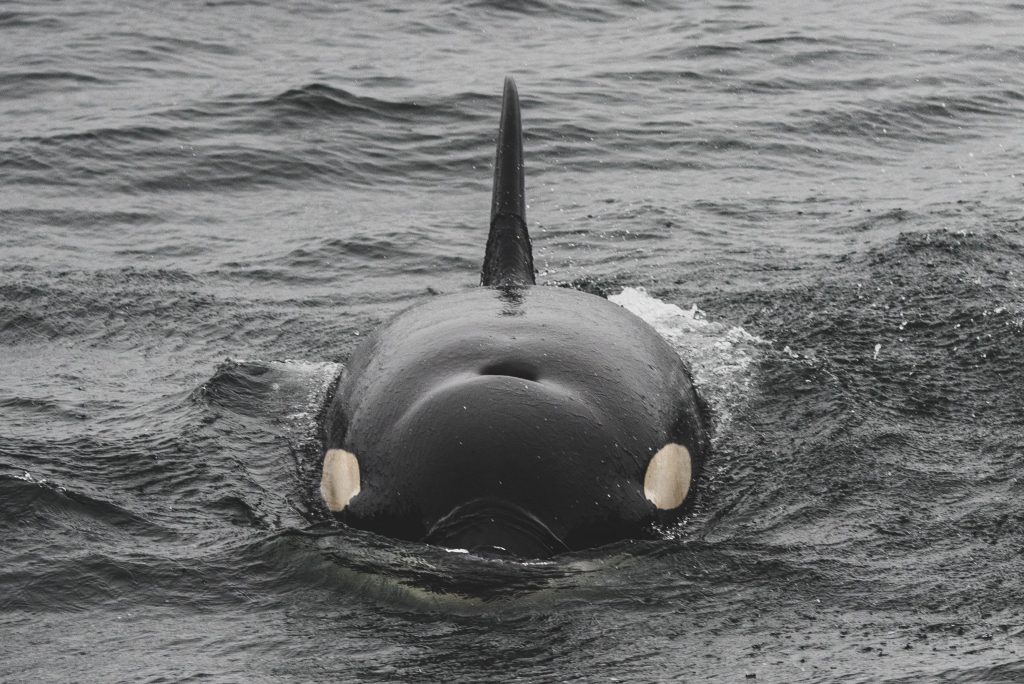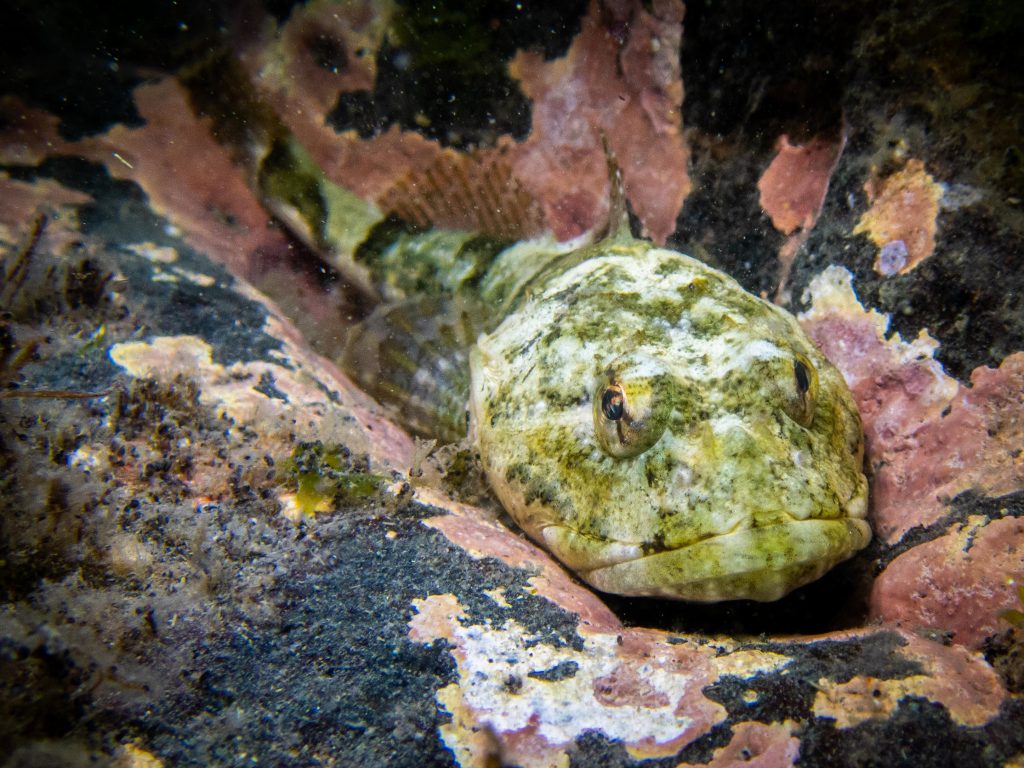
There are three ecotypes of killer whales in the North Pacific, and this one is a transient (Bigg’s) ecotype I observed doing what I can only describe as “harassing” a small humpback whale. While it’s doubtful the killer whales were trying to arrange their next meal, since most of the Bigg’s diet are harbor seals and harbor porpoises, their curiosity likely motivated this encounter. Like humpback whales, killer whales also possess spindle neurons, a physical marker of their intelligence. Photo by Kim Nesbitt.
Paddling my kayak through the stillness of yet another fjord, a humpback whale’s signature “pfffft” catches my attention from miles away. Even though I’ve heard it hundreds of times, the sound gives me hope that the whales will let me into their world, if only to glimpse their tail flukes as they dive.

In the intertidal zone, the most extreme environment on the planet, a whole new set of challenges comes along every six hours with the tide. When fully submerged, predators like sea stars have free reign to move about, eating all in their path. When fully exposed to the air, the birds have a field day. Survival here is unlikely, and only the toughest make it. Photo by Kim Nesbitt.

A favorite for birders and non-birders alike, horned puffins are more than just their adorable beaks and puffed chests. Riding the evolutionary line between a flying bird and a diving bird, their clumsiness in the air is no match for their agility underwater. Swimming like a penguin, puffins make regular dives to 100 or more feet below the water searching for capelin, krill, and other bite-size morsels. Photo by Kim Nesbitt. 
One of the most incredible spectacles to witness is cooperative bubble-net feeding by humpback whales. Humpbacks are known for their intelligence, as evidenced not just by behavior, but their brain organization. Spindle neurons, once thought to be unique to humans and responsible for acts that we associate with our humanity, have existed in cetaceans for 30 million years longer than they have with primates. Photo by Kim Nesbitt.
Here in southeast Alaska, we’re connected not only to the land, but to the water. Our 45-degree waters hold more dissolved oxygen and allow more nutrients from the deep ocean to rise up to the surface than those in the warmer tropics. This combination means plankton, the base of the ocean food chain, can flourish and feed all of our iconic marine animals. That’s why the whales are here.
The sea lions tend to be a bit more curious about me and my kayak though, to the point where I’m nervous that I might be going for a surprise polar plunge. While that hasn’t yet happened, I did once get a flipper to the face. I’m the only kayak in view, surrounded by an epic landscape above while looking down to the kelp forest below, where harbor seals lounge on the shore, seabirds plop below the waterline, and that “pfffft” gets a bit closer.

This group of juvenile Steller sea lions quickly approached my kayak in Glacier Bay National Park, very sure of themselves. You would think that since they are large animals, their only worry would be killer whales, but as recently as 2013, recovered tags that record temperature showed some of them spent time in the body of a cold-blooded animal. Turns out, they were eaten by Pacific sleeper sharks. Photo by Kim Nesbitt 
Sculpins, like this one, are some of my favorite fish to photograph. As “sit-and-wait” predators, they rely on their camouflage until prey gets a little too close. They’re so confident in their camouflage that a diver can approach them, and they normally don’t move, even with a light in their face. Photo by Kim Nesbitt. 
Every spring, harbor seals gather on the ice to give birth to their pups. While those big black eyes are incredibly adorable, seals also rely on their whiskers to find prey. Their whiskers are so good in fact, that blind seals in the wild still can feed themselves. Photo by Kim Nesbitt.
But that’s only half the story.
After signaling “OK” to my buddy, I put my hand over my mask and regulator and let the weight of my gear—more than 100 pounds of it—pull my body backwards into the dark, icy water. I’ve never become used to that first shock of entering the water but once I’ve descended 40, 60, 80 feet below the surface, I’m reminded why Alaska is my favorite place in the world to SCUBA dive.
Everything about our landscape is related to the glaciers that covered Southeast thousands of years ago, and that’s no different underwater. The steep sides of the fjords continue below the waterline, meaning I can dive a short swim from shore in hundreds of feet of water. The colors are what I find most endearing: In a place known for gloomy and dark days, the life under the water is surprisingly colorful. Every inch is covered in the closest thing to alien life we know, populated by animals that don’t even look like animals. I’m only a visitor to this world for an hour or so. In fact, I take longer preparing for the dive than I spend underwater—but that time beneath is nothing less than spectacular.

Born in Maui during the “Year of the Calf,” this is the 2020 calf of Sasha, one of Juneau’s more famous humpback whales. With so few boats on the water for the summer of 2020, the humpback whale calves had an exceptionally quiet feeding season. This calf seemed strong and playful. Photo by Kim Nesbitt. 
Most of us are familiar with the symbiotic relationship between a clownfish and its anemone home from Finding Nemo fame. The candystripe shrimp and the crimson anemone have the same relationship, just in water that’s about 40 degrees colder. In exchange for protection from predators who don’t mess with the anemone’s stinging tentacles, the shrimp keeps the anemone clean. Photo by Kim Nesbitt.

Comments are closed.